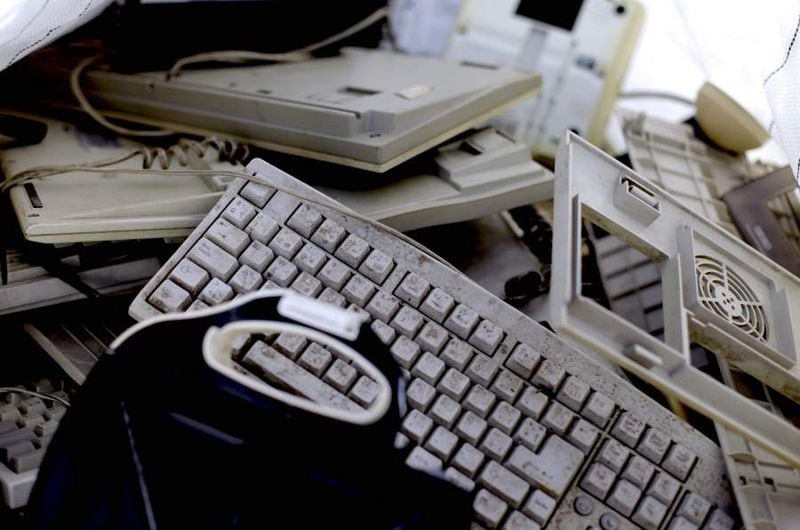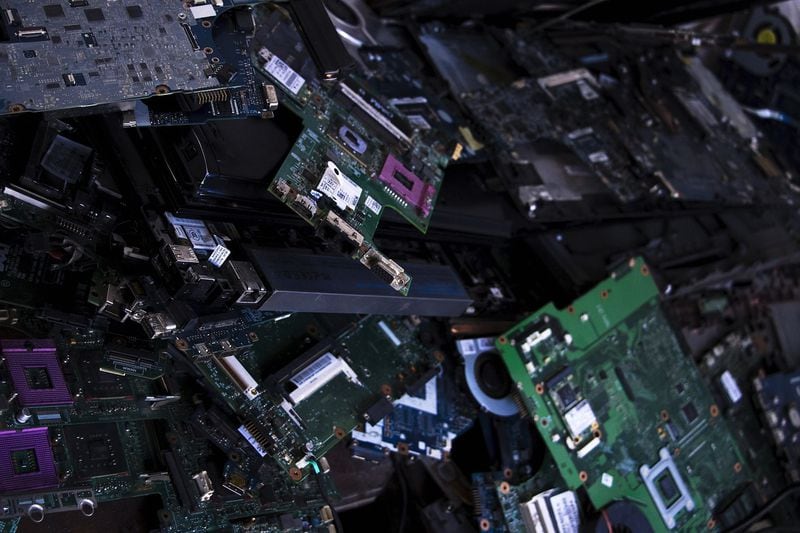Where to throw away this cell phone that no longer works or can no longer be repaired? What to do with the broken TV or obsolete computer? Its components are very polluting, so it is not worth throwing them away.
Half a century ago, homes barely had a refrigerator as an essential appliance, and having a television was a luxury. Today, however, we are surrounded by cell phones, tablets and computers, not to mention headphones, speakers, air fryers, watches and so on.
It is part of the era of hyperconnection and the digital world. Did you know that, according to the INE, there are more than 33 million cell phones in Chile? In other words, there is more than one mobile phone per person. And as the trend continues, this number is expected to increase. What does this tell us?
Much can be speculated or concluded about the dependence we have on technology today. But one thing is indisputable: as we acquire more electronic devices, and with greater frequency, more and more electronic waste accumulates on the planet.
In Chile, more than 200,000 tonnes of waste electrical and electronic appliances are generated each year, or around 9.9 kilos per person. Although the average is lower than that of other countries in the region, it is not far from that recorded by Argentina (10.3 kilos) and Brazil (10.2 kilos), whose populations far exceed the OUR.

According to the Minister of the Environment of the Metropolitan Region, Sonia Reyes, this scenario presents two problems. “First, much of this waste stream ends up in landfills or illegal disposal sites, which is serious because these wastes contain hazardous and highly polluting substances and materials that, if not managed properly , are released into the environment.
Among this type of waste, we commonly find highly toxic chemical elements, such as cadmium, lead, lead oxide, antimony, nickel or mercury. According to World Health Organization, Anyone exposed to these substances can have impaired lung and respiratory functions, damage DNA, impair thyroid function, and increase the risk of chronic diseases in old age, such as cancer and heart disease.
They also represent a significant environmental risk. Its toxicity can contaminate rivers, lakes and seas, thereby increasing greenhouse gas emissions into the atmosphere. It is estimated that digital technologies are responsible for 4% of annual CO2 production.
REP law
The second problem that caused the loss of Sonia Reyes, is that the residuals of electrical and electronic appliances (RAEE) and its components “have many recycling piles, because they represent an important source of material and economic resources that are not approved by the All”.
In Chile, only 5% of WEEE is recycled. Far from the average of 20% managed worldwide, according to Global e-waste monitoring published by the United Nations in 2020. And even further than what they expect, for example, from Royal Society of Chemistry , from the United Kingdom, where they propose that the extraction of minerals and precious metals, for technological or mining purposes, is unsustainable and will not be viable in the future. The big solution, they say, is to recycle.

Law 20,920 on Extended Producer Responsibility (EPR) seeks to remedy this scenario. Its objective is to reduce waste production and promote the values of the circular economy, such as reuse and recycling, in order to protect people’s health and the environment. To this end, it is established that producers and importers of certain products – defined as “priority” – will be responsible for organizing and financing the management of waste resulting from their marketing. The basic principle is “he who pollutes pays”.
Last year, legislation came into force for tires, containers and packaging. Other priority products such as oils and lubricants, batteries and electrical and electronic devices will gradually be added. The decree which will define the collection and recovery objectives and the specific WEEE management and prevention measures was to be ready in February. However, his treatment was postponed until the following semester.
In any case, we can predict that the REP law will not only imply obligations for companies. As with containers and packaging, measures must also be taken in homes to adjust the management of this waste. For some, this may mean big changes in their habits; For others, not so much. But why wait for legislation when you can already dispose of electronic devices responsibly?
Errors and recommendations
According to the Global Monitoring of Electronic Waste 2020, global WEEE production is expected to increase from the current 50 million tonnes to 74.7 million in 2050. And in Chile? “According to the latest projections we have made, in Chile the production of WEEE will increase and reach 258 thousand tons by 2030. Of these, 45% will correspond to the category of small devices, such as mobile phones,” explains Florencia Delgado. , sustainable management project manager Chile Foundation .
As income and consumption capacity increase, another habit also declines: the habit of repairing. “Culturally, the reuse, inheritance and second life of our goods are in decline, a key factor in extending the useful life of this type of product,” says Maria Pavón, director of TRAEE an initiative of the Santiago Chamber of Commerce which aims to promote WEEE management aligned with the REP law and to become a collective management system for these products.
Although we should return to this tradition – not only for electronic devices, but also for clothing, furniture and many other goods – there are still few alternatives to turn to for repairing electronic devices and, in some case, “repair costs are very high”. high compared to that of a new product”, as Florencia Delgado says.
Planned obsolescence – which reduces the useful factory life – of products such as smartphones, tablets and smart TVs doesn’t help either and only encourages impulsive consumption and the production of more waste electronic. “We hope that such practices will be banned in Chile, just like the European Union is doing,” says Delgado.
So what can you do at home to manage electronic waste?
The first thing, say the people interviewed, is to stop throwing this type of waste into the common trash. We have already discussed the risks that many components pose for health and the environment. But to get an idea, “a poorly managed refrigerator could release on average 2,750 kilos of CO2 into the environment, which is more than what a vehicle emits per year in the country,” illustrates Mariana Pavón.
Before getting rid of an electronic device following a technical fault, the ideal would be to consider the possibility of repairing it. “Today there are many companies and initiatives aimed at repairing electrical and electronic devices, so the invitation is always to prevent them and, if this is not possible, to repair them,” explains Seremi Sonia Reyes.
At Práctico we interviewed several technical services, such as Boaz Electronics, Batmac and Tecnifix, to name some specialized in smartphones, computers, tablets and smart TVs.
But if the device cannot be repaired, then it must be deposited in a clean point provided by municipalities, educational institutions, retailers or other private managers, who are responsible for carrying out adequate management that does not involve risks for health or the environment. Actors like Recycling app , Recycle Chile , Chilean either DeBaja.cl in addition to companies such as Sodimac And PC factory have recycling services including green points or home collection.
Source: Latercera
I am David Jack and I have been working in the news industry for over 10 years. As an experienced journalist, I specialize in covering sports news with a focus on golf. My articles have been published by some of the most respected publications in the world including The New York Times and Sports Illustrated.


